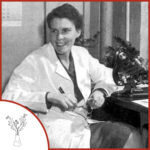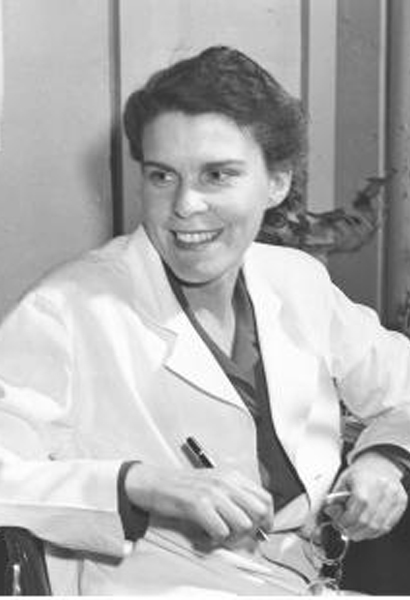

Birth: August 20, 1911
Death: August 18, 1996
Specialty: Medicine, Virology
Major Contributions:
Created first killed-virus vaccine
Discovered different types of polio virus and critical immune response
Created a polio vaccine that protected non-human primates
Born in Massachusetts in 1911, Isabel Morgan was the daughter of embryologist Thomas Morgan, who received the 1933 Nobel Prize in Medicine for his study of chromosomes, and Lilian Sampson, who assisted her husband and published her own papers on genetics.
Morgan graduated from Stanford University in 1932 and then pursued a PhD in bacteriology at the University of Pennsylvania. She joined the Rockefeller Institute for Medical Research after completing her doctorate. There she did research on immunity to viral diseases, such as polio and encephalomyelitis.
In 1944 Morgan moved to Johns Hopkins University, where she continued her work. She discovered that there were three different strains of poliovirus and showed that to be effective, a vaccine must induce antibodies against all three types. She began experiments to immunize monkeys against polio with killed poliovirus.
This was groundbreaking, at that time virologists did not believe that an immune response could be developed without a live virus. In 1949, Morgan became the first person to successfully inoculate monkeys with a killed-virus vaccine.
However, it was at this point that Morgan chose to leave Johns Hopkins and polio research. She reportedly told friends that she was uncomfortable with the next step of testing the vaccine on human children. She married and took a job with a local Department of Laboratory Research in New York. Though she never returned to work on polio, she did publish articles on the subject.
In 1960, Morgan pursued a master’s degree in biostatistics from Columbia University, after which she became a consultant for the Sloan-Kettering Cancer Institute in Manhattan.
Morgan’s work was a critical step in the journey toward a killed-virus polio vaccine. It took another 6 years for Jonas Salk to build on her findings and create a polio vaccine for general use, which was released in 1955. She is the only woman to be inducted into the Polio Hall of Fame.
Written by Nicole Hutchison
Sources:
American Experience-The Polio Crusade: Isabel Morgan
Finding Dulcinea: Isabel Morgan, Pioneer of the Killed-Virus Polio Vaccine
Polio Place: Isabel Merrick Morgan, PhD
See Also:
PBS Learning Media: The Polio Crusade-Biography: Isabel Morgan
LA Times: The Unsung Women in the Race for the Polio Vaccine
